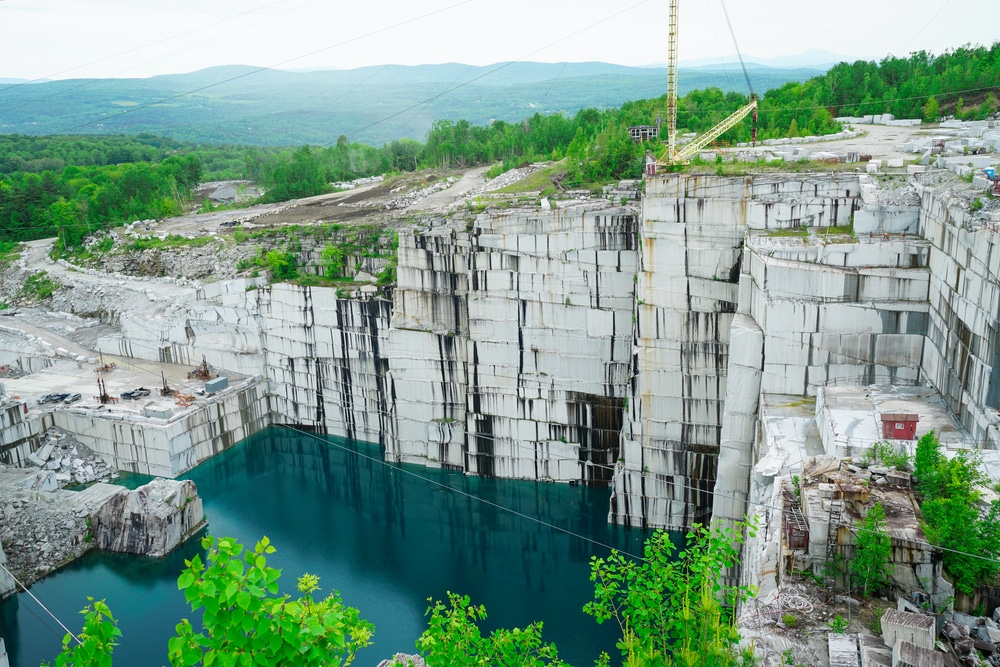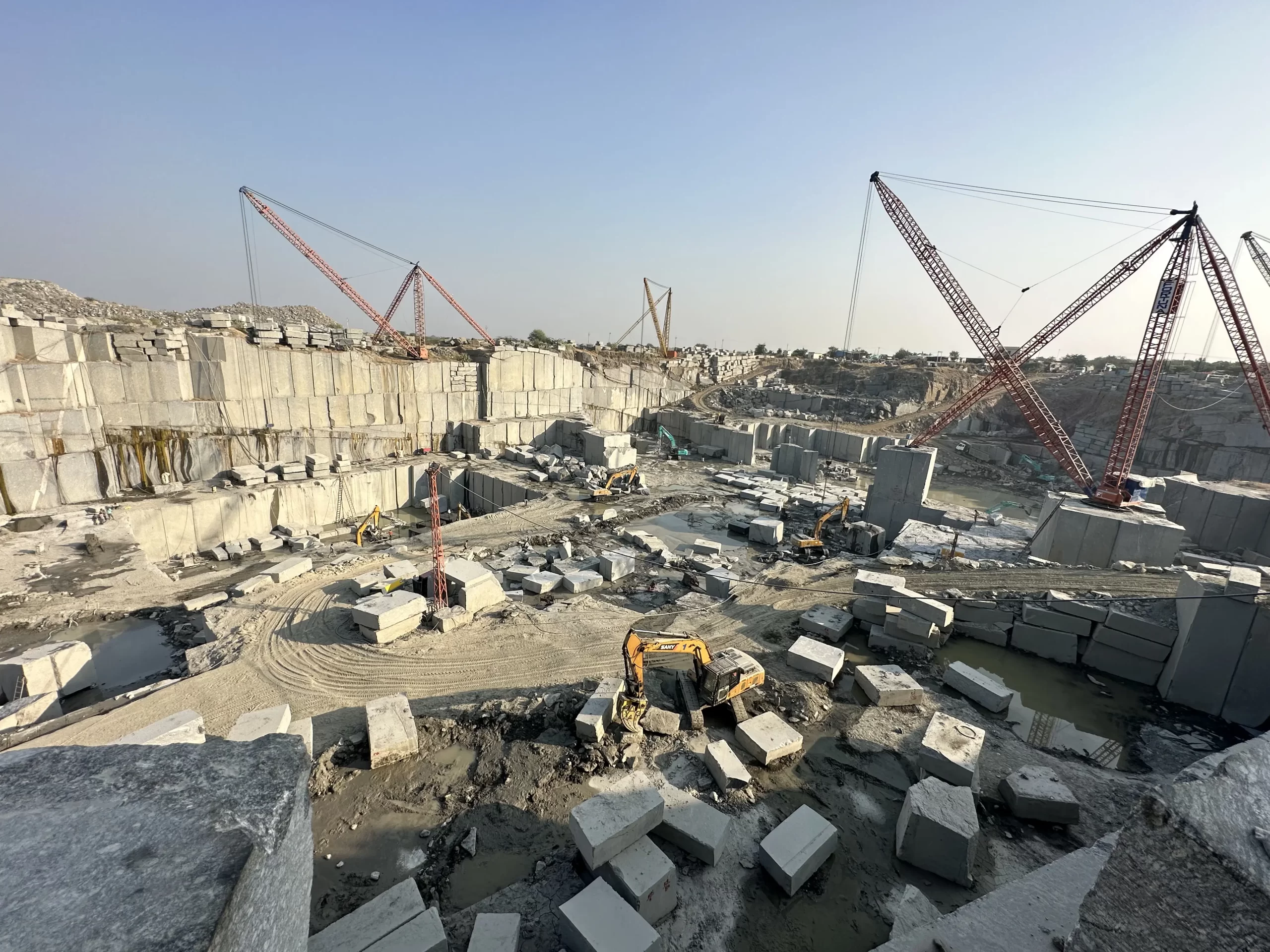Granite Quarries in South Africa Marvels: Discovering the Quarry Landscape
Granite Quarries in South Africa Marvels: Discovering the Quarry Landscape
Blog Article
Introducing the Mysteries of Granite Quarrying: Where Toughness and Style Meet
The globe of granite quarrying is a realm where the raw strength of nature merges with human virtuosity to produce structures that stand the examination of time with an air of style. From the depths of quarries to the precise polishing in workshops, the procedure of transforming granite into building marvels is a complex dancing of custom and development. As we peer right into the midsts of this ancient craft, we start to reveal the concealed complexities that form the extremely essence of our constructed atmosphere.
The Beginnings of Granite Quarrying
In the record of architectural background, the origins of granite quarrying are shrouded in a tapestry of old craftsmanship and geological wonders. Dating back to old Egypt and Mesopotamia, the extraction of granite from quarries noted the beginning of a trip that would ultimately lead to the production of some of the globe's most renowned frameworks.
Granite quarrying's roots can be mapped to the proficient artisans that recognized the stone's durability and visual appeal. With a mix of primitive tools and large determination, these very early quarry employees discovered granite blocks that would certainly become the foundation of civilizations.
As human beings developed, so did the techniques of quarrying granite. The Romans, renowned for their design expertise, developed sophisticated methods for removing granite to construct monuments, temples, and roadways that stood the examination of time.
The legacy of these ancient quarrying methods proceeds to form modern design, with granite continuing to be an icon of strength and beauty in building and construction tasks around the globe. (granite quarries in south africa)
Tools of the Quarrying Trade
The development of granite quarrying methods from old human beings to modern times highlights the vital function played by the devices of the quarrying sell forming the sector's techniques. In old times, quarrying devices were rudimentary, frequently including blades, hammers, and wedges made from materials like bronze or iron. These tools needed considerable workforce and time to essence granite blocks from quarries.

In addition, the introduction of pneumatic tools and high-powered machinery has substantially lowered the physical labor required in quarrying operations, enhancing worker security and efficiency. As the quarrying sector remains to introduce, the devices of the profession continue to be at the center of driving progress and forming the future of granite removal.
Removing Blocks of Granite
Utilizing accuracy equipment and progressed strategies, the removal of granite obstructs from quarries has actually ended up being an advanced procedure in the contemporary quarrying market. The preliminary step includes identifying the location and size of the granite deposit to determine one of the most reliable removal technique. When an appropriate site is selected, the removal procedure begins with the drilling of openings for Bonuses the positioning of dynamites. Controlled blasting strategies are after that utilized to break apart the granite right into workable sections.

Polishing and Completing Techniques
To attain a flawless surface area on granite blocks, experienced craftsmens employ a collection of meticulous sprucing up and ending up methods. After the first extraction and forming processes, the granite blocks go through a comprehensive sprucing up phase to improve their all-natural beauty and toughness. One common technique made use of check it out in brightening granite is diamond abrasion, where industrial rubies are made use of to grind and polish the stone to a smooth surface. This procedure not only creates a shiny surface area yet Source also makes sure harmony in shade and texture across the granite block.
In addition to polishing, finishing techniques are related to further refine the granite's look. These strategies might consist of flaming, sharpening, or cleaning, each offering special appearances and surfaces to fit different aesthetic preferences. Flaming, for example, entails revealing the granite surface area to high temperature levels to produce a rough, textured coating, perfect for outside applications where slip-resistance is vital. Developing, on the other hand, provides a matte coating that is smooth to the touch, best for indoor countertops and floor covering. By meticulously choosing and applying these brightening and ending up methods, artisans can change raw granite blocks into elegant items that showcase both toughness and sophistication.

Ecological Effect and Sustainability
With the growing focus on ecological consciousness in the sector, granite quarrying methods are increasingly looked at for their effect on all-natural resources and long-term sustainability. In addition, the transportation of granite from quarries to processing facilities creates carbon discharges, further adding to environmental destruction.
To reduce these influences and guarantee sustainability in granite quarrying, sector stakeholders are embracing numerous steps. Applying sophisticated modern technologies to decrease power consumption and water use, redeeming quarried land for environmental reconstruction, and promoting accountable sourcing techniques are some techniques being used. Furthermore, accreditations such as the Woodland Stewardship Council (FSC) and the Leadership in Energy and Environmental Style (LEED) aid consumers determine eco pleasant granite products.
Final Thought
To conclude, granite quarrying is a process that needs specialized tools and techniques to extract blocks of granite and polish them to a high degree of coating. While the ecological effect of quarrying can be considerable, efforts are being made to improve sustainability practices in the industry. Overall, granite quarrying is a fragile equilibrium between utilizing the strength and elegance of this all-natural rock while lessening its effect on the environment.
Report this page